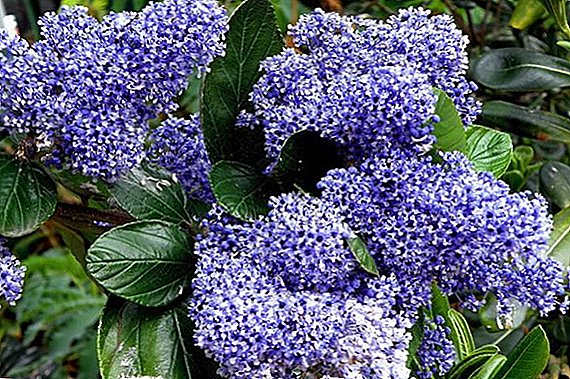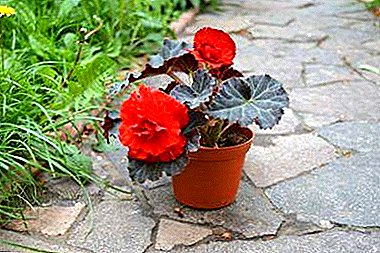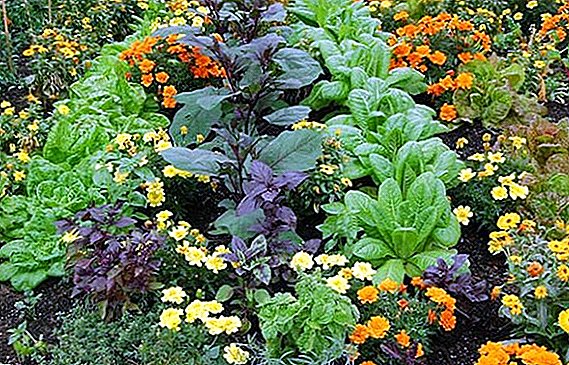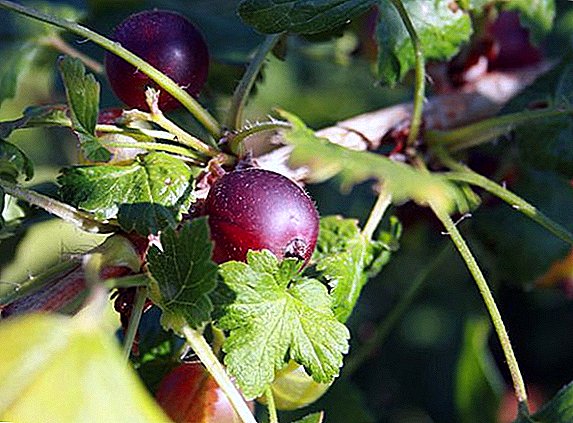 Not every gardener knows the name "yoshta". Recently, more and more garden-berry lovers in our latitudes are interested in this hybrid shrub, although the hybrid itself was bred back in the 80s. It is attractive because the crop can be harvested for a long time in parts - the berries ripen unevenly. At the same time, it is a pleasure to collect them - the branches of the shrub are devoid of thorns, which cannot be said about the progenitors of the shrub. Yoshta is a mixture of gooseberry and black currant, so it absorbed many of their characteristics.
Not every gardener knows the name "yoshta". Recently, more and more garden-berry lovers in our latitudes are interested in this hybrid shrub, although the hybrid itself was bred back in the 80s. It is attractive because the crop can be harvested for a long time in parts - the berries ripen unevenly. At the same time, it is a pleasure to collect them - the branches of the shrub are devoid of thorns, which cannot be said about the progenitors of the shrub. Yoshta is a mixture of gooseberry and black currant, so it absorbed many of their characteristics.
Description of Yoshta
Let's take a closer look at the features and benefits of hybrid shrub. He grows up to one and a half meters in height, which his ancestors are deprived of. Also, in comparison with them, it has more durable rams and branches. In the spring of young shoots from the roots is not enough, so often there is no need to cut the shrubs. The culture is highly frost resistant, so it feels very good in the northern latitudes. And the best part is that she has acquired immunity to diseases and pests that have chosen currants and gooseberries.
Did you know? The first experiments on the crossing of these two cultures began more than a hundred years ago. They were mostly unsuccessful: the flowers did not give the ovary. And only in the 80s the German breeder R. Bauer succeeded in bringing out the first fruiting hybrid. He also gave him the name Iosta, taking the first three letters from the name of the mother shrubs - that's what Yoshta is. Then his compatriot X. Muravski bred varieties Jochemin, Jokhne, Moreau. After them, new hybrids began to receive in other countries of the world.
 The plant is distinguished by dark green leaves that have not inherited the characteristic currant aroma. Blooms bright flowers with a light scent that can self-pollinated. But it is better to plant it near the gooseberry or currant, so that pollination occurs by insects. Brushes that bear fruit, grow short and give no more than five berries. They cling to the stalk and mature unevenly.
The plant is distinguished by dark green leaves that have not inherited the characteristic currant aroma. Blooms bright flowers with a light scent that can self-pollinated. But it is better to plant it near the gooseberry or currant, so that pollination occurs by insects. Brushes that bear fruit, grow short and give no more than five berries. They cling to the stalk and mature unevenly.Did you know? Low yield - the only drawback of the shrub. Because of this, it is not grown on an industrial scale, and planted mostly amateur gardeners. It is also recommended to use the shrub as a hedge. Shrubs with powerful branches grow even with the most modest care, almost no ill and unattractive for pests.
Yoshta berries have a dense black skin color with a slight purple bloom. Even on one hand can grow fruits of different sizes. When they are fully ripe, give a sweet-sour taste with a faint muscat aroma. Juicy berries are rich in vitamins, different healing properties. The first fruits can be expected in the second year after planting a shrub to a permanent place. Then yoshta will produce crops every year. And starting from the third or fourth year, it will reach the maximum of its productivity.
Yoshta varieties
Next, we describe the most common varieties of shrubs that are well established in the middle lane. However, the more south the site is, the more the yoshta will bear fruit and the more juicy will be its berries.
Important! Shrub planted in an open, flat, well-lit place. To get a good harvest, it should be planted on cultivated and well-fertilized soils, in particular, enriched with potassium. The soil is prepared as under a currant, and a currant bush or a gooseberry bush are planted next to it. This will improve pollination performance.
EMB
The British yoshta variety has a bush height of not more than 1.7 meters and a width of about 1.8 meters. Semi-smooth shrub in size and shape of leaves, the color of the bark, the size of the kidneys is similar to currants. The color of the leaves taken from the gooseberry. It blooms for about two weeks from mid-April, and after pollination it gives tasty and large berries up to 5 grams each. In shape and texture resemble more gooseberries than currants. The harvest is abundant, but matures about two months. 
Important! To create a good nutrient regime of the soil, to prevent the growth of weeds and evaporation of moisture, the soil under the crown and around the trunk is mulched. For this purpose, humus or peat is used. Each adult bush plant will require about 20 kg of mulch. Each year it requires about 5 kg of organic fertilizers, 40 g of superphosphate, 20 g of potassium sulfate per square meter. From the fourth year, you can slightly increase the amount of potassium sulfate and organic matter. Feed the bushes on the principle of growing currants.
The variety is resistant to anthracnose, powdery mildew, and may be slightly affected by the kidney mite. It is characterized by high drought resistance, much higher than that of black currant.
Yohini
One of the very first hybrid varieties of yoshta. Differs in high growth, to two meters, and very sweet roundish berries. The bark is similar in color to currant bark, but the leaves are still similar to currant and gooseberry. They have no smell and stay on the bush for a long time. Yoshta flowers of this variety are larger than the parental ones, white in color, gathered three in a brush. Round berries have a sweet, sweet taste. Up to 10 kg can be removed from each bush, which for yoshta is considered a high yield. 
Crown
This yoshta is a Swiss variety. The bush grows straight, reaches a meter and a half in diameter. The buds of the inflorescences are dense, but no more than five berries are tied onto them. The size of the fruit is not very large, often small, sometimes medium. The berries are smooth, black, similar to currants. The only indisputable minus of the variety is that when ripe, the fruits practically do not crumble and keep tightly on the stem. At this grade crown exhausts its advantages. The variety is low-yielding, no more than 3 kg of crop can be removed from one bush. 
Did you know? Shrub berries are rich in vitamins P, C, anthocyanins. It is desirable to eat them raw, but you can cook from them jam, jelly, compotes, jams. The fruits of the yoshta krone and other varieties are used for medicinal purposes: to improve blood circulation, prevent gastrointestinal diseases, remove heavy metals from the body, radioactive substances.
Rext
The variety is bred by Russian breeders, therefore it is frost resistant, resistant to kidney mites, anthracnose, and powdery mildew. Variety gives powerful shoots. They grow up to one and a half meters, grow straight. Black berries of an oval shape by weight reach a maximum of 3 grams. The taste is appreciated highly. The yield of yoshta rekst is relatively high - just over 5 kg on average, but you can remove from one bush and twice as many berries. 
Moro
The variety is distinguished by almost black berries, which have a sweet-sour taste and an intense muscat flavor. On top of them covers the skin slightly purple hue. The size of the fruit is large, almost reach the size of cherries. They have a strong fruit stem, they do not crumble when ripe. Bush yoshty this variety reaches 2.5 meters in height, the diameter is relatively small.  An amazing hybrid yoshta today is little known to amateur gardeners. But those who have already grown it on their site, were satisfied. Planted in the southern regions of the country, the plant produces delicious juicy berries, similar to gooseberries and currants. The north, the lower the yield of the shrub. But he himself is successfully used on sites as a thick and sprawling hedge.
An amazing hybrid yoshta today is little known to amateur gardeners. But those who have already grown it on their site, were satisfied. Planted in the southern regions of the country, the plant produces delicious juicy berries, similar to gooseberries and currants. The north, the lower the yield of the shrub. But he himself is successfully used on sites as a thick and sprawling hedge.












